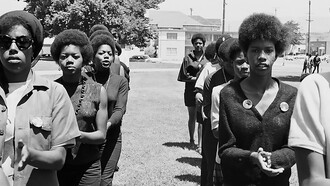Tripura, one of the remotest states in India’s North-East, is a mystical land of stupendous dimensions. Encircled by Bangladesh from three sides (North, South, and West) and the Indian states of Mizoram and Assam to the east, it has been the bastion of royalty for centuries.
Cut off from mainland India for several decades, Tripura to most Indians is an unknown region, and the national media too has portrayed this otherwise beautiful North-Eastern state as a backbencher in terms of trade, commerce, and industry.
Today though, the scene is different—a new government (BJP) is at the helm, and a tremendously motivated Chief Minister, Dr. Manik Saha, who has made development a priority, comes as a real boon to a state which has for decades suffered from administrative lacunae and reeled under 25 years of communist rule that brought more disgrace than honor to Tripura.
Not many are aware that Tripura has been a princely state for centuries, and the Manikya dynasty has ruled not just Tripura but other parts of India’s north-eastern frontiers since the early 15th century.
In the days of yore, the “Tripuri Kingdom” was a protectorate of the British Empire, or Hill Tippera, while those regions that were taken possession of and ruled directly by the British East India Company were referred to as Tippera District. In fact, Hill Tippera joined the Republic of India in 1949, two years after India attained independence.
Travelers to Tripura have been mesmerized by the majestic sight of the iconic Ujjayanta Palace of Agartala, spread over 1 km². This outstanding palace is perhaps one of India’s best specimens of fusion architecture—high domes, curved wooden ceilings, and a miniature Mughal Garden.
If the Ujjayanta Palace is grandiose, the Neermahal, literally meaning a palace on waters, is every bit surreal, located as it is in the middle of Rudrasagar Lake. This impeccable royal palace was built by Maharaja Bir Bikram Kishore Manikya way back in 1930 as his summer residence. If you visit Tripura in the month of August, a colorful water festival is celebrated under the stewardship of the Government of Tripura.
Every year, Tripura comes alive in all its grandeur during the annual Durga Puja celebrations. This is the greatest festival of the Bengalis, and over the past couple of decades, the Durga Puja celebrations have evolved so much that today, if any discerning international traveler happens to visit Tripura during the Durga Puja period, they will witness nothing short of a mega carnival.
Mother goddess Durga is the very embodiment of "shakti," the divine feminine energy that presides over the whole cosmic creation. It is believed that goddess Durga is the personification of all the energies of the gods, including Shiva, Vishnu, and Brahma, to annihilate the demon Mahishasura, who otherwise would never have been defeated by any of the gods. In a way, she is compassion personified and the savior of the universe.
Durga is existence, knowledge, and bliss, and she is independent of the universe of ours, while at the same time, she is also the tender mother of Ganesha and Kartikeya and is thus perceived as the demon annihilator, Parvati.
The Bengalis revere mother goddess Durga with tremendous fervor during this all-important festival, which literally ushers in the commencement of autumn and usually occurs in September or October. In Tripura, this festival occurs from day six through ten of Navratri. On the tenth day, which is referred to as “Bijoya Dashami,” Durga's triumph over evil is celebrated and intriguingly coincides with Dussehra in North India, where people celebrate Lord Rama's victory over the demon Ravana, as depicted in the Ramayana. There is also another school of thought among the Bengalis, who regard Durga Puja as the time when Ma Durga and her children come to their ancestral home and her subsequent reunion with Lord Shiva on the day of Vijayadashami.
Elaborately decorated “pandals,” or makeshift temples made of bamboo and cloth, are erected in all major city/village squares to house the idols. Over the years, these lavishly done-up pandals have evolved, perfectly in sync with the contemporary world, and each year there is fierce competition among neighborhood puja pandals and puja themes. These days, the more popular community pujas in Agartala even have corporate sponsorship to boost their innovation streak.
First-time visitors to Tripura would do well to coincide their visit to the city during the Durga Puja festival. The Department of Tourism, Government of Tripura, organizes a bewildering array of “Puja Parikrama Tours” that take visitors to all the important puja pandals of the city and beyond.
As the capital of Tripura, the city of Agartala comes alive during the Durga Utsav, and this is one period when the number of men and women dressed in traditional attire outnumbers those in contemporary designer outfits. The city explodes with joie de vivre, and why not? Close to a thousand pandals are erected and decorated with diverse themes, all depicting the infinite aura of goddess Durga. Millions of pandal-hoppers touchdown in Agartala, making it one of the largest festivals in the world.
However, from the multitude of pujas, the one that stands out is Agartala’s Durgabari Puja – steeped in tradition that goes back 148 years. This one-of-a-kind state government-sponsored Durga Puja was first initiated by the royal family of Tripura. At first, this Puja was celebrated in Udaipur, later shifting to Amarpur, and finally to Agartala’s Durgabari in the early 18th century by His Excellency Maharaja Krishna Kishore Manikya Bahadur, on whose initiative a temple was built and dedicated to the mother goddess.
There is quite a bit of history attached to the Durga Utsav of Durgabari. At the time of Tripura’s accession to India (15th October, 1949), it was officially approved that the daily expenses and other miscellaneous expenditures incurred at the Durgabari temple and the Tripureswari Kali Temple at Udaipur (Gomati district) would be fully funded by the state government.
Adhering to the accession agreement, the District Magistrate of West Tripura is the de facto Sevayat (servitor) of the Puja, conferred with the authority to supervise the temple proceedings. However, the royal family of Tripura is the titular head of the temple.
The idol of Devi Durga, however, is an aberration. Instead of the ten-handed goddess that we are accustomed to, the Devi at the Durgabari Temple has two arms! Legend has it that Maharani Sulakhshana Devi, who was the consort of Maharaja Krishna Kishore, lost her senses at the sight of the all-powerful ten-armed idol of the Goddess, and on that very night, she was blessed with a dream wherein Devi Durga urged her to worship the two-armed idol instead of the ten-armed one! Thus, even today, the idol of Devi Durga at the Durgabari temple has two arms, with the remaining eight arms hidden behind her.
On the 10th day of Durga Utsav, Dashami to be precise, the idols of Durgabari are immersed at Agartala’s Dashami Ghat with full State/Rastriya Maryada, with the Tripura state police offering the Devi a fabulous guard of honor to the backdrop of the police band’s rendition of India’s national anthem – Jana Gana Mana Adhinayaka...
The karigars, or sculptors, who design idols of gods and goddesses of the Hindu pantheon can be found in the neighborhoods of Melaghar, Bisramganj, and Unakoti. They use raw clay as the primary ingredient to craft idols of gods and goddesses. They are a close-knit community and take immense pride in their profession. Try to enter their workshop spaces, and even better if you strike up a conversation. If you know Bengali, no problem. If language is a barrier, hire the services of a guide from the Tripura Tourism Department. You will come across unending rows of idols stacked meticulously. The height varies, usually ranging between 18 feet and 20 feet. In spite of the advent of modernity, the sculptors of Melaghar, Bisramganj, and Unakoti have kept pace with the demands of changing times.
Witnessing the process of idol-making at Melaghar, Bisramganj, and Unakoti is an introduction to ancient Indian artistic ethos, with karigars going into the sculpting mode after performing the holy “Garanlkathamo Puja,” which coincidentally falls on the day of Rath Yatra. The thousand-year-old Indian Puja rituals blaze the modern inquisitive mind, and the devotion that is inherent in the minds of the karigars is truly a humble spiritual experience – worshipping the tools, performing special puja for Lord Ganesha and Goddess Lakshmi, to name just a few. Even the dresses and accessories of the idols are consecrated to the almighty god. It is worth your while to venture into this mysterious cultural cauldron of Tripura, and if you can brave the narrow crowded lanes and bylanes, you can rest assured of having a date with divinity.
The Melagahar-Bisramganj-Unnakoti circuit is the bastion of “Karigars” / sculptors who have diligently been crafting idols of gods and goddesses for generations together, using clay in its rawest form to eke out idols that are simply stupendous in terms of beauty, glamour, and glitz.
The city of London is blessed with Madame Tussauds, and it took a visionary wax sculptor of the stature of Marie Tussaud to come up with one of the world’s most amazing wax sculptor galleries way back in the year 1835.
As a proud Bengali, I shall wait in anticipation for the day when Tripura’s idol sculptors will find a patron to convert the Melagahar-Bisramganj-Unnakoti circuit into a veritable museum of clay sculptors, who will sculpt, chisel, and give divine shapes to the figures of gods and goddesses of the Hindu pantheon.















